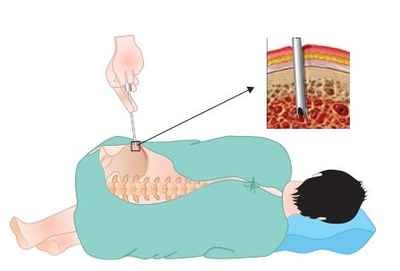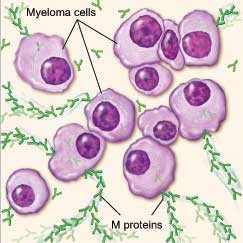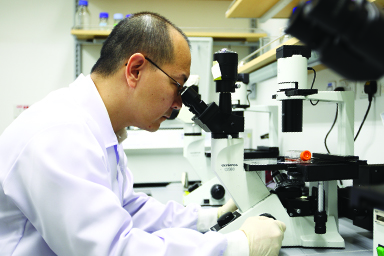If you have a symptom that suggests Multiple Myeloma, your Doctor must find out whether it is due to cancer or some other cause. Your Doctor may ask about your personal and family medical history. You may also have one or more of the following tests.
Physical Exam
Your Doctor checks general signs of health, including checking for signs of disease, such as lumps or anything else that seems unusual. A history of the patient's health habits and past illnesses and treatments will also be taken.
Blood Tests
Your Doctor may order blood tests. The lab may check the level of many different proteins, including M protein and other immunoglobulins (antibodies), albumin and beta-2-microglublin as Multiple Myeloma causes high levels of proteins in the blood. The lab may also do a complete blood count to check the number of white blood cells, red blood cells, and platelets as myeloma may also cause anaemia and low levels of white blood cells and platelets. The lab may also check for high calcium levels or perform creatinine tests.
Urine Tests
The lab may test for Bence Jones protein, a type of M protein, in urine. The lab measures the amount of Bence Jones protein in urine collected over a 24-hour period. If the lab finds a high level of Bence Jones protein in your urine sample, Doctors may monitor your kidneys as Bence Jones protein can clog the kidneys and damage them.
X-rays
This test is used to identify lytic lesions in the bones caused by myeloma. In addition, this test can also detect any weakened bone areas or fractures that may require surgery.
Magnetic Resonance Imaging (MRI)
A procedure that uses magnet, radio waves, and a computer to make a series of detailed pictures of areas inside the body. This procedure is called nuclear magnetic resonance imaging (MRI). An MRI may be used to find areas where the bone is damaged.
Biopsy
The Doctor may remove tissues to look for cancer cells. A biopsy is the only sure way to know whether myeloma cells are in your bone marrow. Before the sample is taken, local anaesthesia is used to numb the area to help reduce the pain. The doctor then removes some bone marrow from your hip bone or another large bone. A pathologist uses a microscope to check the tissue for myeloma cells. There are two ways the doctor can obtain bone marrow. Some patients may encounter both procedures during the same visit.
- Bone Marrow Aspiration - The doctor uses a thick, hollow needle to remove samples of bone marrow.
- Bone Marrow Biopsy - The doctor uses a thick, hollow needle to remove samples of bone marrow.


























